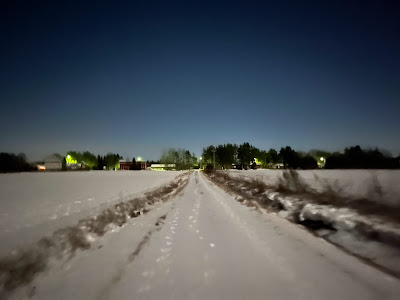Moonlight consists of mostly sunlight (with little Earthlight) reflected from the parts of the Moon's surface where the Sun's light strikes.
The intensity of moonlight varies greatly depending on the lunar phase, but even the full moon typically provides only about 0.05–0.1 lux illumination.[2] When a full Moon around perigee (a "supermoon") is viewed around upper culmination from the tropics, the illuminance can reach up to 0.32 lux.[2] From Earth, the apparent magnitude of the full Moon is only about 1⁄380,000 that of the Sun.
My other blogs:
Roadscape Photography
Chevrolet El Camino 1970
Life @ Loimaa, mostly Finnish





